|
TIA/EIA Revision G standard will incorporate sweeping changes
TIA/EIA-222-G, the national standard’s seventh revision for Steel Antenna Towers and Antenna Supporting Structures, 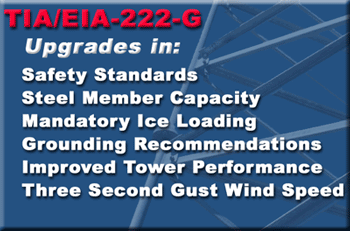 becomes effective January 1, 2006. The ANSI standard is required to be reviewed every five years and is oftentimes reaffirmed, such as Revision C which was active for almost 20 years. Prior to Revision D’s introduction in 1987, tower manufacturers provided a host of information to their customers to assist them in understanding the reasons for the considerable design changes and how the revision would affect their new structures in capacity, engineering and pricing. Revision G’s considerable changes will also require consumer and governmental awareness prior to and after its effective date. The standard was was first published in 1949. becomes effective January 1, 2006. The ANSI standard is required to be reviewed every five years and is oftentimes reaffirmed, such as Revision C which was active for almost 20 years. Prior to Revision D’s introduction in 1987, tower manufacturers provided a host of information to their customers to assist them in understanding the reasons for the considerable design changes and how the revision would affect their new structures in capacity, engineering and pricing. Revision G’s considerable changes will also require consumer and governmental awareness prior to and after its effective date. The standard was was first published in 1949.
Revision D’s significant change introduced Basic Wind Speed which is used in the current Revision F standard. Revision G incorporates a performance-based approach called "limit states design" to ensure that structures are safe under extreme loading conditions. By comparison, the old standard, which uses a "serviceability limit states" approach and checks only that the structure is capable of the service under normal conditions. Presently, wind loading is calculated according to the Fastest-Mile Wind Speed for the structure’s location as recorded from the 1-in-50-year wind speeds encountered at that location that were constant over a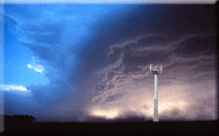 distance of one mile. This will be calculated differently in Revision G because the government has stopped measuring wind in this manner, using a more accurate and larger set of wind measurements. distance of one mile. This will be calculated differently in Revision G because the government has stopped measuring wind in this manner, using a more accurate and larger set of wind measurements.
The new revision will require that wind loading be calculated according to the three-second-gust wind speed, allowing the tower’s design to accommodate instantaneous loads. Most National Weather Service sites record three-second gust wind speeds which will provide for more accurate averages for Rev G and future revisions. Ice loads will be escalated with height, and seismic loads will be by geographic area. All three loadings will be determined by specific local county criteria from wind, ice, and seismic maps.
Antenna mounts, ice loading and safety addressed 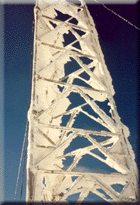
Rev G’s many changes will meet or exceed the local and national building codes and the standard is expected to become accepted by those agencies that enforce them. Rev G will offer solutions for seismic and ice loading as well as provide a distinction between an urban and rural environment for design purposes. It will redefine what constitutes a wind load. Rev F required the designer to consider ice loading on the structure; Rev G will make it mandatory as detailed in an ice loading map in the revision which will be based upon the tower height, elevation and exposure.
Additional safety considerations for erection and maintenance for qualified and experienced personnel is addressed 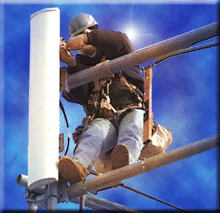 in the new standard for climbing and working facilities, requiring minimum capacities to support man loads and safety equipment. It is also expected that the standard will include new design theories to determine the capacity of a tower’s steel members. in the new standard for climbing and working facilities, requiring minimum capacities to support man loads and safety equipment. It is also expected that the standard will include new design theories to determine the capacity of a tower’s steel members.
Antenna mounts will be recognized as an extension of the tower and will be required to be designed to support the same loading as the tower. New grounding specifications are also being introduced.
Three structure categories will be introduced according to reliability requirements. Category I structures present a low hazard to human life and are used for optional or non-critical services. Category II structures represent a substantial hazard to human life and are used for services that may be provided by other means. Category III structures are used for essential facilities and represent substantial hazard to human life upon failure.
Rev G to eliminate "Normal Soil"
TIA/EIA-222-F cites EIA “Normal Soil”. However, Revision G eliminates “Normal Soil”. Over the years, structures have been installed using “normal soil” designs throughout the country without the benefit of soil borings to identify actual conditions. Stamped drawings have been approved by building authorities regardless of the soil properties. Unfortunately, 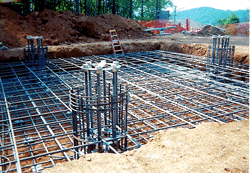 the error isn’t obvious until such time as a catastrophic event collapses the tower and exposes the faulty design. the error isn’t obvious until such time as a catastrophic event collapses the tower and exposes the faulty design.
The new standard will remove the “normal soil” definition, but add in an annex of values that are representative of a soil type such as clay or sand. If the client does not provide this information there is a default value that all bids are to be competed against.
The ideal situation, however, is to have the customer provide a geotechnical report along with the bid documents. It’s an expense that will eventually be incurred by the client, but can add value to the bid proposals and overall project.
How will the revision affect pricing?
Rev G is reported to offer advantages which will affect the  structure’s design and the resulting pricing. structure’s design and the resulting pricing.
The TIA/EIA committee's better understanding of wind loads, ice loads, seismic loads and foundation parameters generally will allow more capacity on existing structures under the new standard, although not in every case. Wind loads will take into account the immediate environment of a structure, such as urban or hilly, flat open or hurricane shoreline.
By providing accurate and detailed information on wind and ice loading for the new structure’s location, the tower can be tailored for the owner’s requirements and may improve tower performance and increase the structure’s capacity without having to over or under-design the tower. Also, if multiple quotations are received by the purchaser it will be easier under Rev G to identify if similar designs are being used to ensure a quality product.
In comparison to Rev F, initial engineering runs under Rev G with identical loading, saw a decrease in pricing for towers in some zones within the country; however, areas with higher three-second-gust wind speeds and mandatory ice loading resulted in higher pricing.
Existing towers and Rev G compliance varies
When Rev G becomes effective, it will be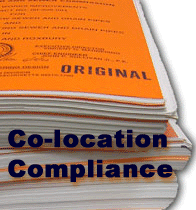 required to use this standard when reanalyzing new applications that go beyond the original scope of the tower loading when it was designed and constructed under previous TIA/EIA revisions. Therefore, all co-location applications not initially considered in the original design will require the tower to be reanalyzed under Rev G. required to use this standard when reanalyzing new applications that go beyond the original scope of the tower loading when it was designed and constructed under previous TIA/EIA revisions. Therefore, all co-location applications not initially considered in the original design will require the tower to be reanalyzed under Rev G.
TIA/EIA-222 is reviewed and rewritten by a volunteer committee of the industry’s leading tower engineers and other communication products engineering consultants, erection professionals and end-users.
The EIA (Electronic Industries Alliance) and TIA (Telecommunications Industry Association) are accredited by the American National Standards Institute (ANSI) to develop voluntary industry standards for a wide variety of telecommunications products.
For further information about Rev G and how it affects specifiers, estimators or owners, contact our valued tower manufacturing experts or consult our listed professional engineers.
NOTE: This generic, non-exhaustive overview is intended to serve as a useful starting point for research and analysis of the topics addressed. Proper training, professional knowledge and oftentimes licensing are required prior to anyone providing product design, selection, installation, and construction/development-related activities. This information is neither presented to instruct nor teach anyone in the proper or safe methods of any aspect of wireless design or construction. To ensure minimum exposure and to determine compliance for a safe working environment, you must obtain the advice and guidance of an industry professional. professional knowledge and oftentimes licensing are required prior to anyone providing product design, selection, installation, and construction/development-related activities. This information is neither presented to instruct nor teach anyone in the proper or safe methods of any aspect of wireless design or construction. To ensure minimum exposure and to determine compliance for a safe working environment, you must obtain the advice and guidance of an industry professional.
WARNING: Failure to meet these minimum requirements and appropriate compliance responsibilities can result in serious injury or death to you or your fellow workers. All aspects of wireless construction are hazardous by nature. You have the sole responsibility to act safely and with caution prior to performing any construction-related task. your fellow workers. All aspects of wireless construction are hazardous by nature. You have the sole responsibility to act safely and with caution prior to performing any construction-related task.
|